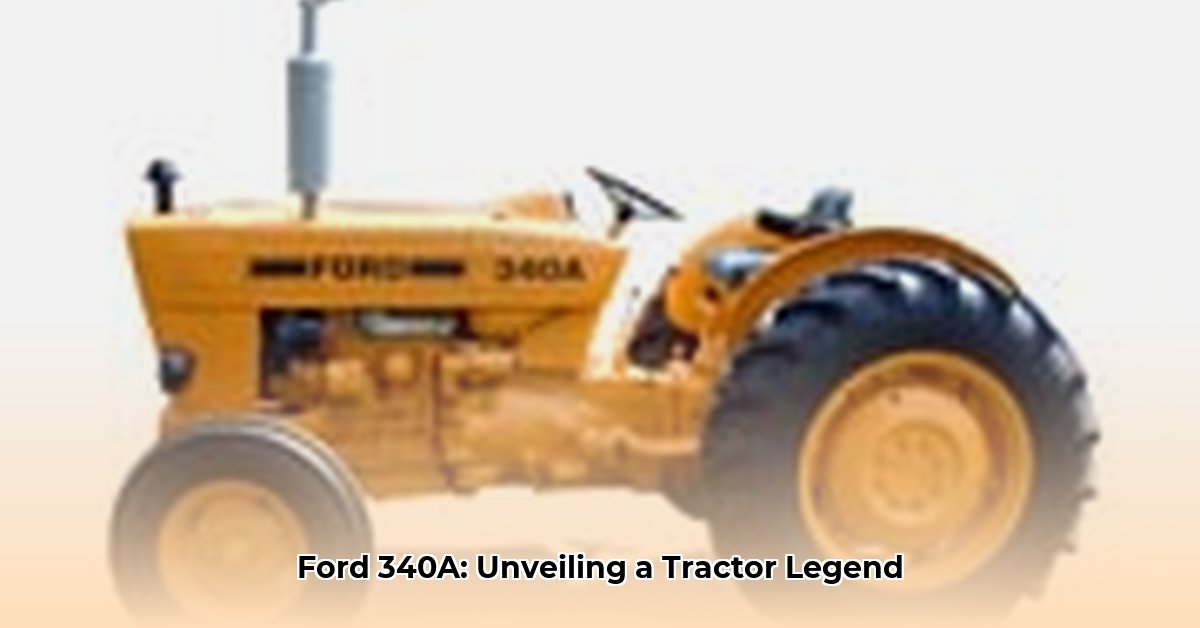
Ford 340 and 340A Tractors: A Comparative Analysis
The Ford 340 and 340A tractors, produced between 1979 and 1984, represent a significant chapter in Ford's agricultural machinery legacy. While sharing a similar design philosophy, subtle differences in specifications and features distinguish these workhorses. For more horsepower data on similar Ford tractors, see this helpful resource. This comparison analyzes their key attributes, historical context, and practical considerations for modern owners and enthusiasts.
Comparative Specifications: Ford 340 vs. 340A
Data regarding these tractors is scattered and sometimes inconsistent across various sources. The following table represents the most commonly reported specifications, acknowledging potential variations due to production year, optional equipment, and reporting inconsistencies.
| Feature | Ford 340 | Ford 340A | Notes |
|---|---|---|---|
| Engine Type | Diesel | Diesel | Three-cylinder, 2.9L; precise model varies by production year. |
| Horsepower (Gross) | ~44 hp | ~44.5 hp | Gross horsepower figures vary significantly across different sources. |
| Horsepower (Net) | Data Scarce | Data Scarce | Net horsepower data is similarly inconsistent and often unavailable. |
| Engine Displacement | ~2.9 Liters | ~2.9 Liters | Engine displacement is generally agreed upon, but precise figures are not universally consistent. |
| Transmission | 8-Speed (Synchronization unclear) | 8-Speed (Synchronization unclear) | Most sources suggest 8 forward and 2 reverse gears; synchronization details are inconsistent. |
| Hydraulic System | Open Center | Open Center | Precise flow rates and capacities are not consistently reported across available documentation. |
| PTO Horsepower | Data Scarce | ~40 hp (Claimed) | PTO horsepower significantly varies depending on the source; confirmation is needed. |
| Weight | ~11,500 lbs | ~9,100 to 11,500 lbs | Weight varied considerably depending on configuration and optional equipment. |
| Dimensions | Data Scarce | Data Scarce | Comprehensive dimensional data (length, width, height, wheelbase) is lacking in many sources. |
| Optional Features | ROPS, Front-end loader, Backhoe | ROPS, Front-end loader, Backhoe | Both tractors offered a similar range of optional attachments. |
Key Differences and Improvements: 340A vs. 340
While definitive conclusions are hampered by data inconsistencies, the 340A may have offered minor enhancements over its predecessor. Higher claimed PTO horsepower suggests improvements in power transfer. Similarly, if reported hydraulic flow rates differ, this would improve implement response. However, further investigation and cross-referencing of data sources is essential to fully understand the extent of these differences.
Historical Context: The Ford 340 and 340A in the Agricultural Landscape
The Ford 340 and 340A embody the technological advancements in agricultural machinery during their production years. The era saw significant improvements in diesel engine technology, leading to more efficient and reliable tractors. These models reflect the growing demand for versatile and powerful equipment to meet the changing demands of farming practices.
Practical Considerations for Collectors and Restorers
Owning and maintaining a Ford 340 or 340A today requires careful consideration. Parts availability is a major concern; locating replacement components can be challenging and expensive. Regular maintenance and cautious operation are essential due to the age of these machines. Safety should always be the top priority when operating older agricultural equipment.
Conclusion: A Legacy of Durability and Adaptability
The Ford 340 and 340A tractors, despite data limitations, hold a notable place in agricultural history. Their robust design and adaptability contributed significantly to farming operations. While precise specifications require further research, their enduring legacy is testament to their durability and importance during a period of significant agricultural technological advancement. Ongoing efforts to preserve and restore these classic machines ensure their continued presence in the history of farming technology.